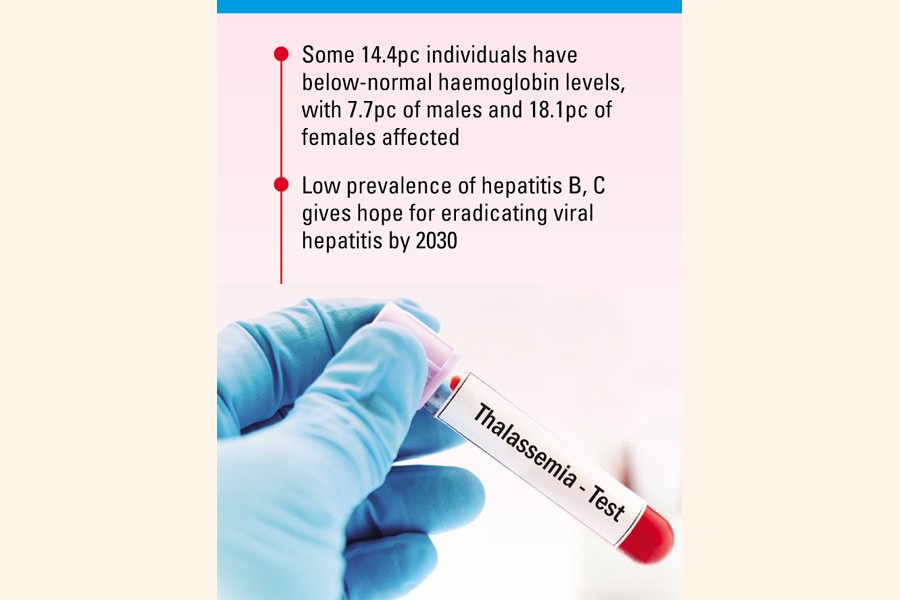
BBS NATional THALASSEMIA SURVEY
11.4pc participants are disease carriers
FE REPORT | Saturday, 14 September 2024

The National Thalassemia Survey 2024 has revealed that 11.4 per cent of the participants are carriers of the disease, based on the findings of the six haemoglobin variants. Despite medical advancements, thalassemia remains a leading cause of morbidity and mortality.
In the blood sample analysis, 11.4 per cent of individuals in the country, aged 14 to 35 years, have abnormal haemoglobin patterns. Though the values are within the normal range for about 88.6 per cent of the individuals, it is a significant public health concern, the survey added.
The Bangladesh Bureau of Statistics (BBS) conducted the survey and published the results on its website on Thursday. The survey estimated the prevalence of thalassemia as well as hepatitis B and C carriers among the Bangladeshi population aged 14-35 years.
Thalassemia is a genetic autosomal recessive disorder that reduces haemoglobin production, impairing the red blood cells' ability to transport oxygen. Its carriers inherit defective genes from one of the parents and normal genes from the other, resulting in mild anemia and other problems.
The survey found a low prevalence of hepatitis B and C, which gives significant hope for eradicating viral hepatitis by 2030.
Most people (51.6 per cent) understand that thalassemia is non-contagious, though many (31.4 per cent) are still unaware of it. Genetic knowledge about the disease is higher among females (79.6 per cent) than males (72.1 per cent).
Overall, 14.4 per cent individuals have below-normal haemoglobin levels, with 7.7 per cent of males and 18.1 per cent of females affected.
Awareness of prevention methods and testing procedures is generally low, with only 4.0 per cent of the population ever being tested. Regarding hepatitis B, 98.8 per cent of the population tested negative, while 1.2 per cent tested positive.
Awareness of the disease is low, with only 30 per cent of males and females having heard of hepatitis B. A significant portion (76.1 per cent) is unaware of its contagious nature. Vaccination rates within families are low, with only 24 per cent acknowledging family vaccinations.
Awareness of thalassemia is higher among males (22.1 per cent) compared to females (14.0 per cent), with an overall awareness rate of 18.4 per cent.
Most respondents (60.0 per cent) do not believe that there is a hepatitis B carrier in their household, and a similar percentage (63.8 per cent) think that there is no hepatitis B patient in their house. The overall prevalence of hepatitis C is 0.05 per cent.
BBS engaged 434 local registers and hired 434 medical technologists to collect and transport blood samples. The survey achieved 91.92 per cent collection rate, with 7,979 samples collected from the target households. Among the respondents, 48.9 per cent were male and 51.1 per cent female.
nsrafsanju@gmail.com